
16 (preliminary) tornadoes so far in Minnesota in 2011. 1,425 tornadoes nationwide, as of June 2. (SPC).

Slight Severe Storm risk today, best chance of strong/severe storms north/east of St. Cloud.
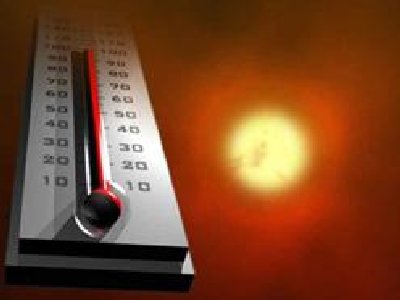
84 degrees predicted today; the mercury may hit 90 south/west over southern Minnesota. Today will be only the 4th day in 2011 warmer than 80 F.
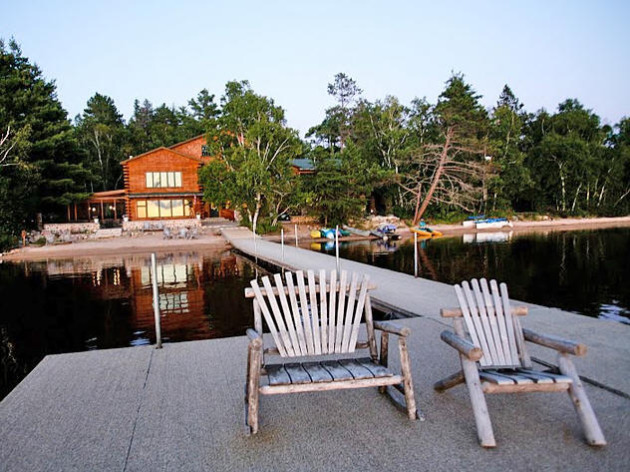
Nice Weekend. Slightly cooler, highs in the upper 70s to low 80s, but the sun should be out most of the time with a dip in humidity. A PM instability shower can't be ruled out, especially up north, Saturday & Sunday afternoon.
Saturday Winds: West 10-15 (barometer holding nearly steady).
Sunday Winds: West/southwest 5-10 (slowly falling barometer).

The United (Severe) States of America. According to SPC, the USA has seen 1,425 tornadoes as of June 2. In addition: 5,150 reports of large, damaging hail and 7,068 separate reports of damaging straight-line winds. The red dots are tornado touchdowns, green = hail and blue = high (straight-line) winds.
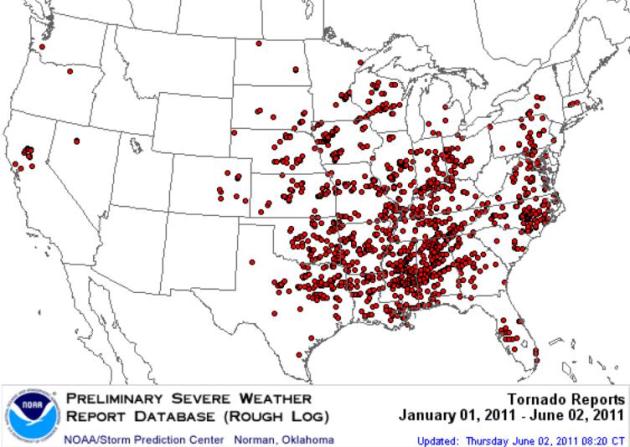
Preliminary Tornado Count. 1,425 tornadoes so far - a preliminary number, and what's striking about this map is the (apparent) eastward shift in "Tornado Alley". I'm amazed by the shear number of tornado reports east of the Mississippi. Click here to see the raw data from SPC, NOAA's Storm Prediction Center in Norman, Oklahoma.
Minnesota Numbers: So far 16 (preliminary) tornadoes in Minnesota; that number will probably come down (some of these may have been the same tornado, viewed from different perspectives, rather than separate tornadoes). 78 reports of large hail (1" diameter or larger) and 41 reports of damaging straight-line winds.
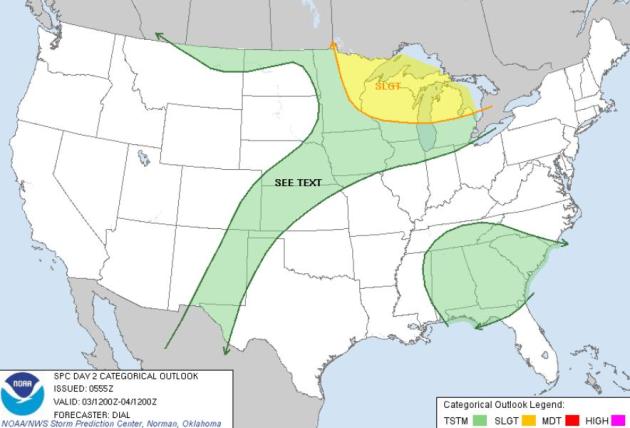
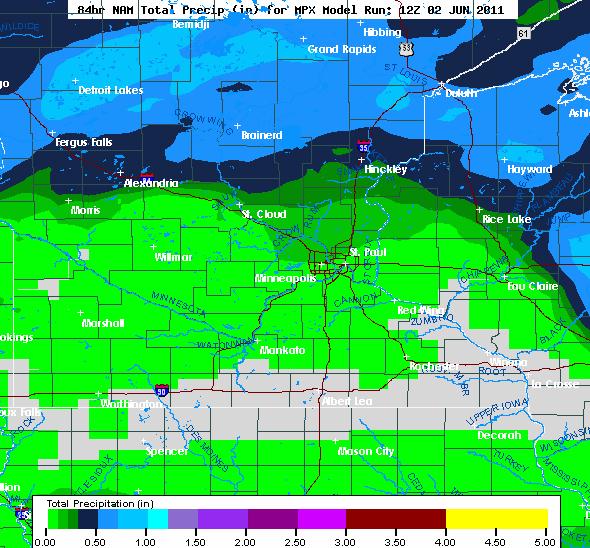
Heaviest Rains Up North. The best chance of heavy/severe T-storms will come north of St. Cloud and Hinckley over the next 24-36 hours, more than .5 to .75" rain from Detroit Lakes and Brainerd to Grand Rapids and Duluth.
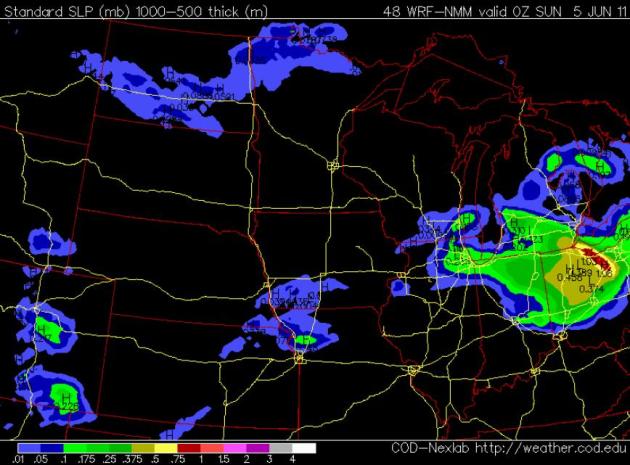



"10 Minute Warning". A tornado watch was in effect at the time a series of (large/violent) tornadoes swept across central Massachusetts, by some accounts the tornado warning was issued 10 minutes before a 1/4 to 1/2 mile wide tornado swept into Springfield. That's less than the national average (which is roughly 13 minutes), but still enough time for anyone paying attention to seek shelter. More details from Huffington Post and AP: "MONSON, Mass. — The sight of flattened homes, peeled-off roofs and the toppled steeple of a 140-year-old church stunned New Englanders after deadly tornadoes swept through Massachusetts, striking an area of the country that rarely sees such severe twisters. The storms, which came with fair warning but still shocked with their intensity, killed at least three people, injured about 200 and wreaked damage in a string of 18 cities and villages across central and western Massachusetts. If the National Weather Service agrees Wednesday's three deaths are tornado-related, it would bring the year's U.S. toll to 522 and make this year the deadliest for tornadoes since 1950. The highest recorded toll was 519 in 1953; four deaths from Joplin, Mo., that were added Thursday tied the record. There were deadlier years before 1950, but those counts were based on estimates. Tornadoes are not unheard of in New England – the downtown of Connecticut's largest city was devastated by one last June – so many people heeded warnings. That didn't guarantee their survival; among the dead was a mother who shielded her teenage daughter as they huddled in a bathtub."
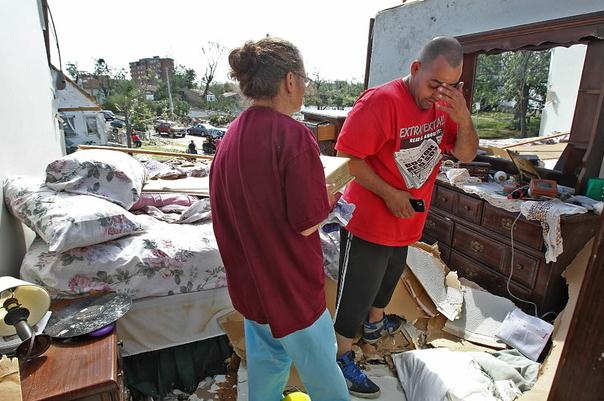
Trio Of Mass. Tornadoes Wrecked Some 200 Buildings. Boston.com has more details of the freak tornado that struck Springfield, possible an EF-2 tornado, that appeared to be 1/4 to 1/2 mile wide at times - highly unusual for New England: "At least 200 buildings were destroyed by tornadoes as they carved their deadly paths through Central and Western Massachusetts on Wednesday, hitting particularly hard in a group of eight or nine communities that included the city of Springfield, Governor Deval Patrick said this afternoon. Patrick, who said the National Weather Service had confirmed that at least three tornadoes had touched down, said 35 buildings were destroyed in Springfield, 88 in West Springfield, and "77 and counting" in Monson. The official death toll remains at four and no one is unaccounted-for, he said. He said 290 people were still in shelters, about half the number from Wednesday, and 40,000 to 41,000 homes and businesses were without power. Meanwhile, the grim details -- and a story of a heroic mother saving her child -- began to emerge about the people who were killed in the storms. Officials in West Springfield said Angelica Guerrero, 39, had been killed when she threw her teenage daughter in the bathtub and jumped on top of her, saving her as the house collapsed around them."
Weather Videos:
Mass. tornado damage:
http://www.youtube.com/watch?v=EiR2B4-O2_o
http://www.youtube.com/watch?v=zropdvnRJpI
Mass. tornado:
http://www.youtube.com/watch?v=w7NOk2rCUbk
http://www.youtube.com/watch?v=UideGMF9y48
http://www.youtube.com/watch?v=4bQOH2Wnz7I
Mass. hail:
http://www.youtube.com/watch?v=laAnvIT04h0
http://www.youtube.com/watch?v=EiR2B4-O2_o
http://www.youtube.com/watch?v=zropdvnRJpI
Mass. tornado:
http://www.youtube.com/watch?v=w7NOk2rCUbk
http://www.youtube.com/watch?v=UideGMF9y48
http://www.youtube.com/watch?v=4bQOH2Wnz7I
Mass. hail:
http://www.youtube.com/watch?v=laAnvIT04h0
Springfield Mass damage:
http://www.youtube.com/watch?v=NBp28-Y_wK8
Springfield tornado:
http://www.youtube.com/watch?v=cw_4Ny7ydYA
Spokane, WA flooding
http://www.youtube.com/watch?v=NKuTx-EdmWc&hd=1
Kayaking on flooded MO river ND
http://www.youtube.com/watch?v=aXj-6S1-0-M&hd=1
http://www.youtube.com/watch?v=M18UHYcMl6Q&hd=1
MO river flooding ND
http://www.youtube.com/watch?v=MP6GAu6ttrI&hd=1
http://www.youtube.com/watch?v=NBp28-Y_wK8
Springfield tornado:
http://www.youtube.com/watch?v=cw_4Ny7ydYA
Spokane, WA flooding
http://www.youtube.com/watch?v=NKuTx-EdmWc&hd=1
Kayaking on flooded MO river ND
http://www.youtube.com/watch?v=aXj-6S1-0-M&hd=1
http://www.youtube.com/watch?v=M18UHYcMl6Q&hd=1
MO river flooding ND
http://www.youtube.com/watch?v=MP6GAu6ttrI&hd=1
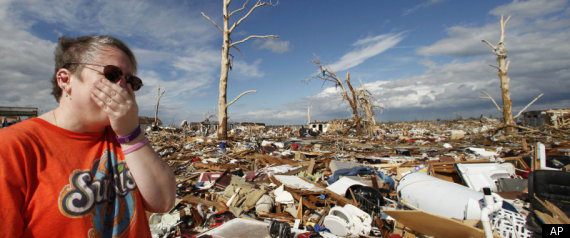
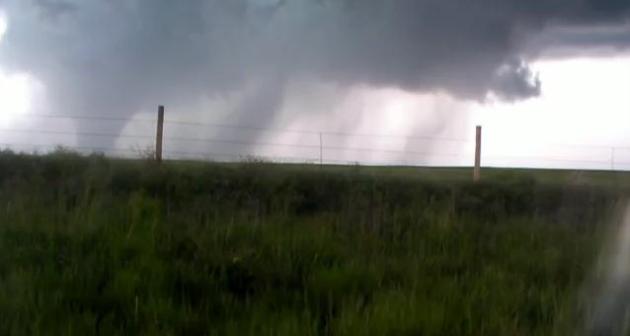

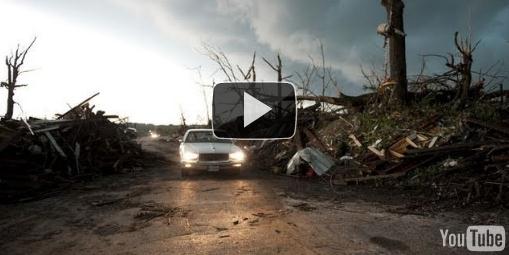
"JEFFREY BROWN: The storm in Joplin was preceded by a series of tornadoes this spring that has brought devastation to the South and Midwest. All together, it's been the deadliest season since 1950, with more than 520 people killed so far. All of this has led to many questions about what's behind this - what is happening this year. Judy Woodruff explores the science. Jeff Masters, let me begin with you. You have been studying meteorology for over 30 years. Just how much more severe are the storms, the tornadoes, we have been seeing this year than in the past?

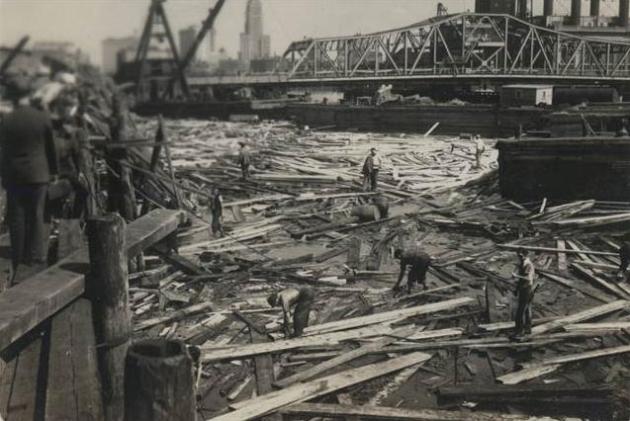




A Camera, A Card, A Connection. David Pogue at the New York Times takes a close look at "Eye-Fi", a new generation of (SD) cards that allow you to transmit your photos directly to your PC or Mac, without a physical cable or connection. A new generation not only taps the power of your home or office WIFI network but can create it's own mobile hot-spot. Very cool, a 10 on the geek-o-meter:
"You can take photos with your favorite camera, but transmit or upload them to the world from your cellphone, on the spot. It’s a memory card, of all things: The Eye-Fi Mobile X2 card ($80). Eye-Fi cards have been around for a while. The first ones did one thing very well: they transferred photos from your camera to your computer — and online sites like Flickr or Picasa — when you’re in a Wi-Fi hot spot. (Yes, that’s right: the Eye-Fi folks have squeezed Wi-Fi circuitry onto a memory card the size of your thumbnail. Think about that too hard, and you’ll give yourself a headache.) Eventually, the company took this feature to its logical conclusion: the bottomless memory card. If you’re in Wi-Fi, you can keep snapping photos. The card steadily backs them up to your computer or a Web site, and then deletes the backed-up photos from the card to make room for new ones. You never run out of card space. Recent models have added geotagging (your geographical coordinates get invisibly stamped onto each photo, so you can view them later on a map online) and the ability to transfer photos in RAW format. All the cards are physically identical, though; you can buy a card intended for one purpose (like the Mobile X2), and then pay $30 each to add features from other cards. (If this all seems confusing, you’re right.) But the Mobile X2 is the first Eye-Fi card that can perform its magic even when you’re not in a Wi-Fi hot spot."


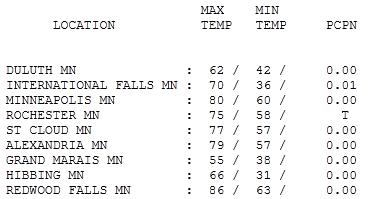
Thursday Numbers. With sunshine much of the day temperatures soared into the 80s south of the Minnesota River, a balmy 86 at Redwood Falls, 80 in the Twin Cities, 77 at St. Cloud and a brisk 62 at Duluth.
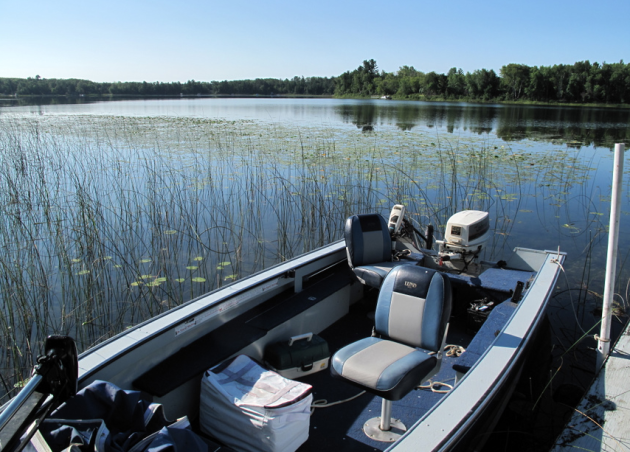
Paul's SC Times Outlook for St. Cloud and all of central Minnesota:
TODAY: Intervals of warm sun, windy, few strong/severe storms? Winds: SW 10-20. High: 84
FRIDAY NIGHT: A few T-storms, some heavy, turning cooler late. Low: 60
SATURDAY: Lot's of sunshine, very pleasant (slight chance of a PM shower up north). Winds: W 10-15. High:79
SATURDAY NIGHT: Mostly clear and pleasant. Low: 58
SUNDAY: Partly sunny, slight chance of a late-day shower or thundershower. Winds: W/SW 5-10. High: near 80
MONDAY: Plenty of warm sunshine. Low: 61. High: 83
TUESDAY: Sticky sun, PM T-storms. Low: 66. High: 86
WEDNESDAY: Unsettled, lingering T-shower or two. Low: 68. High: 85
THURSDAY: Intervals of sun, still warm. Low: 65. High: 80

"Pleasant Weekend"
I know: 2 words you haven't seen next to each other for a long, long time. "Pleasant weekend." The planets have aligned; we're all winners of the Weather Lotto this weekend. Blue sky, a drop in humidity, lake-worthy temperatures near 80 both days. Yes, I'll believe it when I see it too, but right now we're moderately optimistic.
Recently a friend asked, "Paul, we're having late springs and long, milder autumns in Minnesota. Is this a trend?" Maybe. "Both seasons (spring and fall) show warming trends in the broadest context (50-100 years)", said Professor Mark Seeley. He says the data shows a nearly equal distribution of very warm (early) springs and very late, cold springs. "Fall seasons (Sept-Nov) show a more one-sided distribution, with far more long, warm ones, than short and cool ones." Interesting.
A hot front boosts the mercury into the mid 80s later today, a few strong/severe storms may flare up later, especially north/east of the Twin Cities. Stay alert for watches & a few warnings.
The sun stays out most of the weekend with a slight dip in temperature and humidity, a few late-day instability T-showers possible Sunday, but MOST of the weekend should be sun-splattered and pretty nice. 80s linger next week. Summer's here - finally!

Record CO2 Levels A Bad Sign For Global Climate Goals. After a slight dip in 2008 and 2009, tied to the global recession, emissions of CO2 and other greenhouse gases reached a new record in 2010, as reported by greenbiz.com: "Record levels of carbon dioxide (CO2) emissions last year threaten our chances of keeping the Earth's temperature from rising 2 degrees Celsius, considered by scientists to be the threshold for catastrophic climate change. CO2 emissions from energy production in 2010 were the highest in history following a recessionary dip the year before, the International Energy Agency (IEA) said in a stark announcement Monday. Existing and planned power plants mean the bulk of energy-related CO2 emissions projected for 2020 are already "locked in." "This significant increase in CO2 emissions and the locking in of future emissions due to infrastructure investments represent a serious setback to our hopes of limiting the global rise in temperature to no more than 2ºC," Fatih Birol, the IEA's chief economist, said in a statement. World leaders have agreed to limit global temperature rise to 2 degrees Celsius or less above pre-industrial levels to prevent catastrophic climate change, which could include heat waves, rising sea levels, extreme weather and droughts, among other impacts."
 "Very Worried" About Escalating Emissions? You Should Be. Australia's "The Conversation" has the story: "The International Energy Agency (IEA) has released unpublished estimates of 2010 global carbon dioxide (CO₂) emissions, and the news is not good. Between 2003 and 2008, emissions had been rising at a rate faster than the IPCC worst case scenario. However, the global recession slowed the emissions growth considerably. In fact, they actually declined slightly from 29.4 billion tons (gigatons, or Gt) CO₂ in 2008, to 29 Gt in 2009. However, despite the slow global economic recovery, 2010 saw the largest single year increase in global human CO₂ emissions from energy (fossil fuels). They grew a whopping 1.6 Gt from 2009, to 30.6 Gt. The previous record annual increase was 1.2 Gt from 2003 to 2004. As illustrated in Figure 1, in 2009 we had dropped into the middle of the IPCC Special Report on Emissions Scenarios (SRES) scenarios, but the 2010 increase has pushed us back up toward the worst case scenarios once again."
"Very Worried" About Escalating Emissions? You Should Be. Australia's "The Conversation" has the story: "The International Energy Agency (IEA) has released unpublished estimates of 2010 global carbon dioxide (CO₂) emissions, and the news is not good. Between 2003 and 2008, emissions had been rising at a rate faster than the IPCC worst case scenario. However, the global recession slowed the emissions growth considerably. In fact, they actually declined slightly from 29.4 billion tons (gigatons, or Gt) CO₂ in 2008, to 29 Gt in 2009. However, despite the slow global economic recovery, 2010 saw the largest single year increase in global human CO₂ emissions from energy (fossil fuels). They grew a whopping 1.6 Gt from 2009, to 30.6 Gt. The previous record annual increase was 1.2 Gt from 2003 to 2004. As illustrated in Figure 1, in 2009 we had dropped into the middle of the IPCC Special Report on Emissions Scenarios (SRES) scenarios, but the 2010 increase has pushed us back up toward the worst case scenarios once again."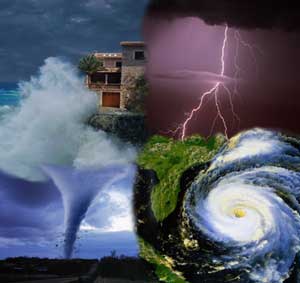

Do I have any takers?"

Climate Change And Your Health: Rising Temperatures, Worsening Ozone Pollution. Here's a post from the Union of Concerned Scientists: "Millions of Americans suffer from the harmful effects of ground-level ozone pollution—be they children too sick to go to school, high school football players not allowed to practice outdoors in the summer, 65-year-olds with lung disease unable to take a walk in the park, or farmers at risk when they harvest their fields. Ground-level ozone pollution exacerbates lung diseases such as asthma and can cause breathing difficulties even in healthy individuals.
Ozone pollution is expensive.
Not only does ozone pollution cause a number of serious breathing problems, and therefore a great deal of suffering, it also is damaging in monetary terms. Whether tallying up the dollars lost to sick days or the high costs of emergency-room visits, ozone pollution is expensive.Climate change could worsen ozone pollution.
| |

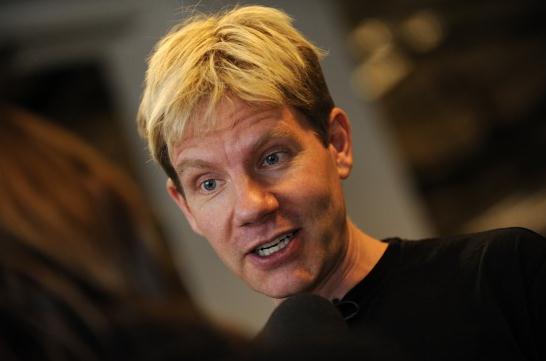
Bjorn Lomborg: Debunked By Climate Science Rapid Response Team. Full disclosure: I'm a member of the CSRRT. Mr. Lomborg has a tendency to put a positive spin on climate change, emphasizing "market solutions" and minimizing the need to worry about worst-case scenarios. The publication "Take Part" has a fascinating interview with Bjorn, where they categorically debunk most of his claims: "On June 2, 2011, TakePart published an exclusive interview with Bjørn Lomborg, the Danish statistician and former climate change skeptic. Because we questioned two of Lomborg's answers, we submitted them to the Climate Science Rapid Response Team (CSRRT) for analysis. Founded in late 2010, the first of its kind organization is a match-making service that links members of the media with top scientists. The end goal is to improve communication about climate change. What follows are the two TakePart questions, Lomborg’s answers that we believed to be questionable, and the truth according to CSRRT.
TakePart: You’ve argued that climate change isn’t the end of the world. Why not?
Bjørn Lomborg: Listen, if you look at the best models out there that indicate what’s going to happen, we’re looking at a sea level rise of somewhere between half and two feet. This will constitute a problem. We know that sea levels rose about a foot over the last 150 years. But it has a very small consequence. And if you look at all of the impacts that are likely to come from global warming, most of them are negative, the economists argue that the total impact by the end of the century will be on the order of 2 to 5 percent of global GDP. That means we will be less rich. That means we will have to spend more money on dealing with the problems that global warming will incur on us. That’s the bad. But remember, 2 to 5 percent is not 100 percent. It is a problem, but it is not the end of the world.
The Truth
Turns out, TakePart was not the first media outlet to question Lomborg's sea level assertion. When we contacted CSRRT for their review of his answer, we were directed to their debunking of a similar claim Lomborg made in a November 22, 2010 Washington Post op-ed: "the fact that the best research we have—from the United Nations climate panel—says that global sea levels are not likely to rise more than about 20 inches by 2100." Back then, Think Progress asked CSRRT to assess his statement. Three scientists—the Carnegie Institution Department of Global Ecology's Ken Caldiera, NASA Jet Propulsion Laboratory's Josh Willish, and Rutgers University's Alan Robock—independently confirmed that Lomborg had misrepresented the Intergovernmental Panel on Climate Change’s (IPCC) report.Read their full debunking here."

James Mashey On Strange Scholarship In The Wegman Report. Plagiarism and bias plagued the recent "Wegman Report", a critique of Michael Mann's "hockey stick", and an indictment of climate science in general. Deep Climate has the details: "This report offers a detailed study of the “Wegman Report”: Edward J. Wegman, David W. Scott, Yasmin H. Said, “AD HOC COMMITTEE REPORT ON THE ‘HOCKEY STICK’ GLOBAL CLIMATE RECONSTRUCTION”(2006). It has been key prop of climate anti-science ever since. It was promoted to Congress by Representatives Joe Barton and Ed Whitfield as “independent, impartial, expert” work by a team of “eminent statisticians.” It was none of those. A Barton staffer provided much of the source material to the Wegman team. The report itself contains numerous cases of obvious bias, as do process, testimony and follow-on actions. Of 91 pages, 35 are mostly plagiarized text, but often injected with errors, bias and changes of meaning. Its Bibliography is mostly padding, 50% of the references uncited in the text. Many references are irrelevant or dubious. The team relied heavily on a long-obsolete sketch and very likely on various uncredited sources. Much of the work was done by Said (then less than 1 year post-PhD) and by students several years pre-PhD. The (distinguished) 2nd author Scott wrote only a 3-page standard mathematical Appendix. Some commenters were surprised to be later named as serious “reviewers.” Comments were often ignored anyway. People were misused. The Wegman Report claimed two missions: #1 evaluate statistical issues of the “hockey stick” temperature graph, and #2 assess potential peer review issues in climate science. For #1, the team might have been able to do a peer-review-grade statistical analysis, but in 91 pages managed not to do so. For #2, a credible assessment needed a senior, multidisciplinary panel, not a statistics professor and his students, demonstrably unfamiliar with the science and as a team, unqualified for that task. Instead, they made an odd excursion into “social network analysis,” a discipline in which they lacked experience, but used poorly to make baseless claims of potential wrongdoing."
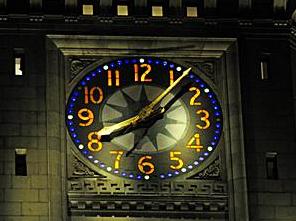

Bank Of America Targets 15% Drop In Greenhouse Gas Emissions, Funds $55 Million Fund For Retrofits. A tip of the hat to Bank of America for recognizing a problem, trying to reduce their carbon footprint (and simultaneously, their energy costs). Greenbiz.com has more: "Bank of America has raised the bar for its environmental performance with new goals to achieve a 15 percent reduction in greenhouse gas emissions from worldwide operations and attain LEED green building certification for 20 percent of its corporate real estate. The goals were among the expanded environmental commitments announced by the firm in the past two weeks. On Wednesday, Bank of America said it will provide $55 million in low-cost loans and grants to community lenders in a competitive program that's designed to encourage energy efficiency retrofits in older buildings. The new GHG target follows one that BofA set and exceeded for reducing its carbon footprint. The firm was aiming for a 9 percent absolute reduction in GHG emissions from legacy BofA operations in the U.S. by 2009, compared to a 2004 baseline. BofA slashed emissions by 18 percent, as the company noted in its most recent report to the Carbon Disclosure Project. The goal for a 15 percent cut in GHG emissions by 2015 also calls for an absolute reduction, but uses a 2010 baseline and factors in international properties as well as legacy operations for Countrywide and Merrill Lynch, which the company acquired in 2008 and 2009, respectively."



No comments:
Post a Comment